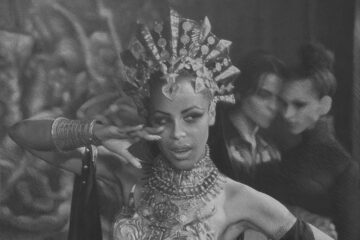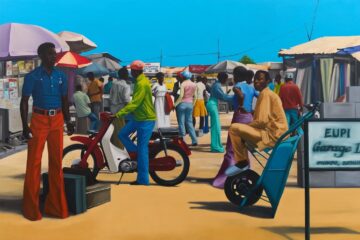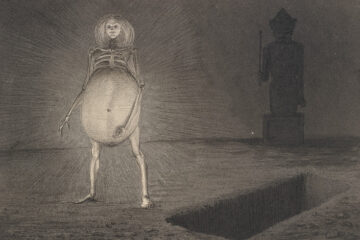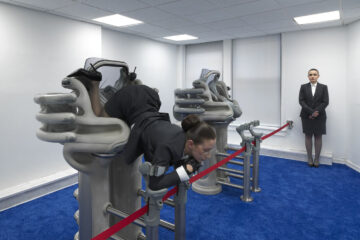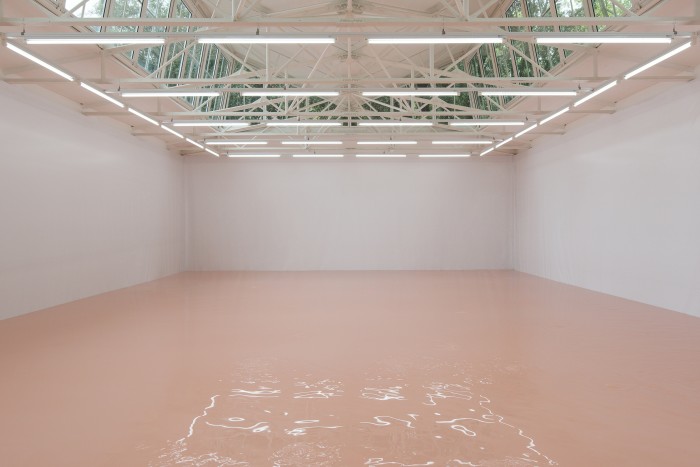
Pamela Rosenkranz filled the Swiss Pavilion at the Venice Art Biennale 2015 with an immersive installation, “Our Product“, that activated “the knowledge mobilized in the technological, scientific and conceptual development of products, subverting the culturally consolidated meanings of art”.
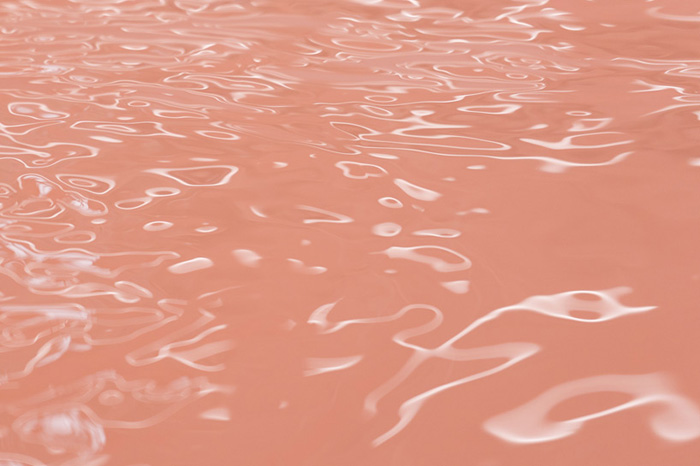
Her chosen materials – Bionin, Evian, Necrion, Neotene, Silicone, among the others – are familiar to us more for the esoteric promises that some of them are embedded with, than with the physical substances which they are actually composed of. However, their apparently pure and timeless aesthetic qualities they emit, have a biological basis.
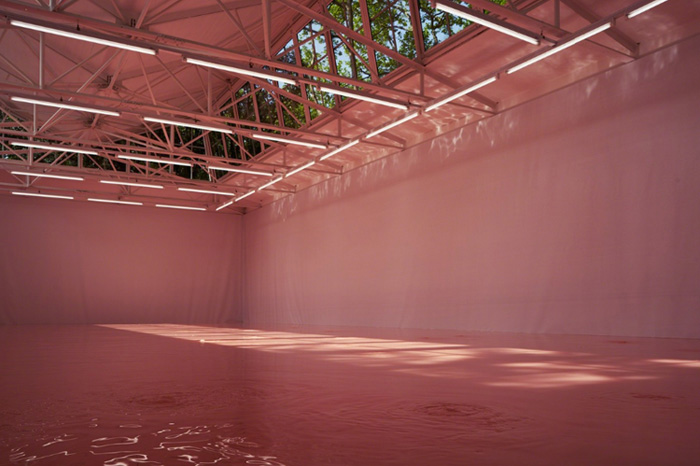
By guiding our perception of the Pavilion through a skilful interplay of supposedly immaterial elements such as light, colour, scent, sound and organic components such as hormones and even bacteria, Rosenkranz confronted the historically, religiously and commercially transmitted image of what it meant to be human with its biological genesis.
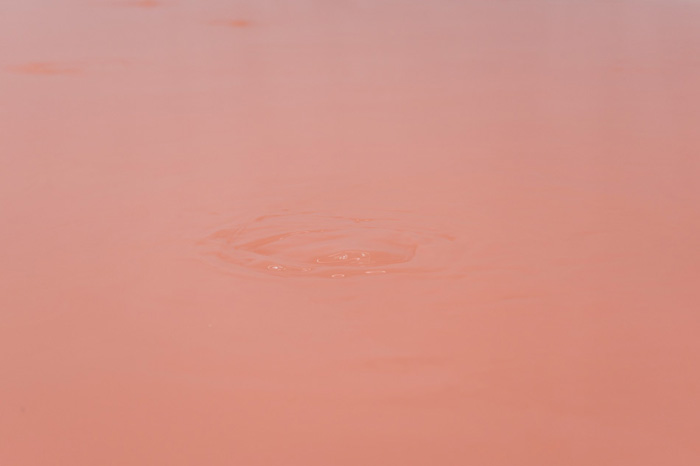
Rosenkranz isolated the large interior space with plastics, filling it with a monochrome liquid mass matching a standardised northern European skin tone. This Eurocentric skin colour, reminiscent of the «carnate» used in Renaissance painting to render the visual qualities of human flesh, is employed in today’s advertising industry as a proven way to physically enhance attention.
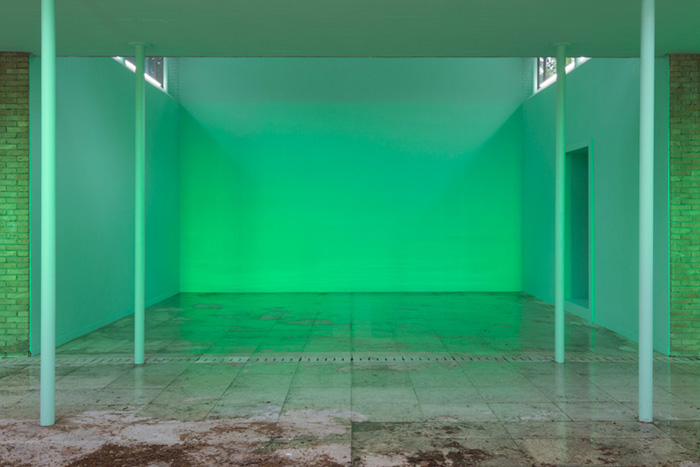
Rosenkranz contrasted this skin colour – the product of a natural history involving migration, exposure to the sun and nutrition – with a verdant green coating the institutional mantle of the Swiss Pavilion. Smells and sound penetrated the architecture. The synthetic sound of water, generated by an algorithm in real time, disseminated throughout the space, and a scent evoking the smell of fresh baby skin billowed through the Pavilion.
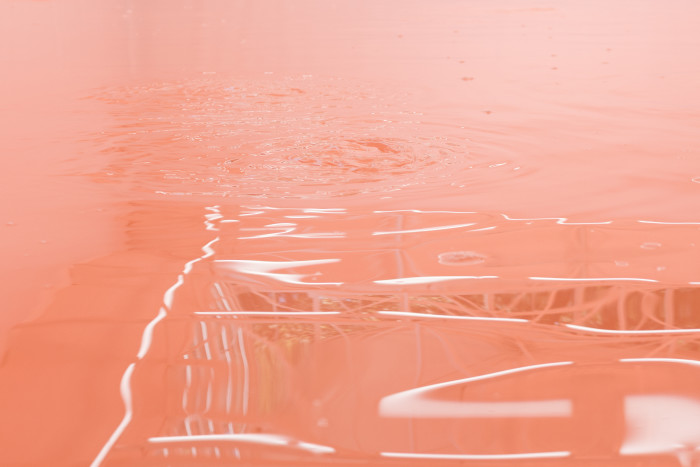
Images courtesy of Marc Asekhame
Discover: biennials.ch
